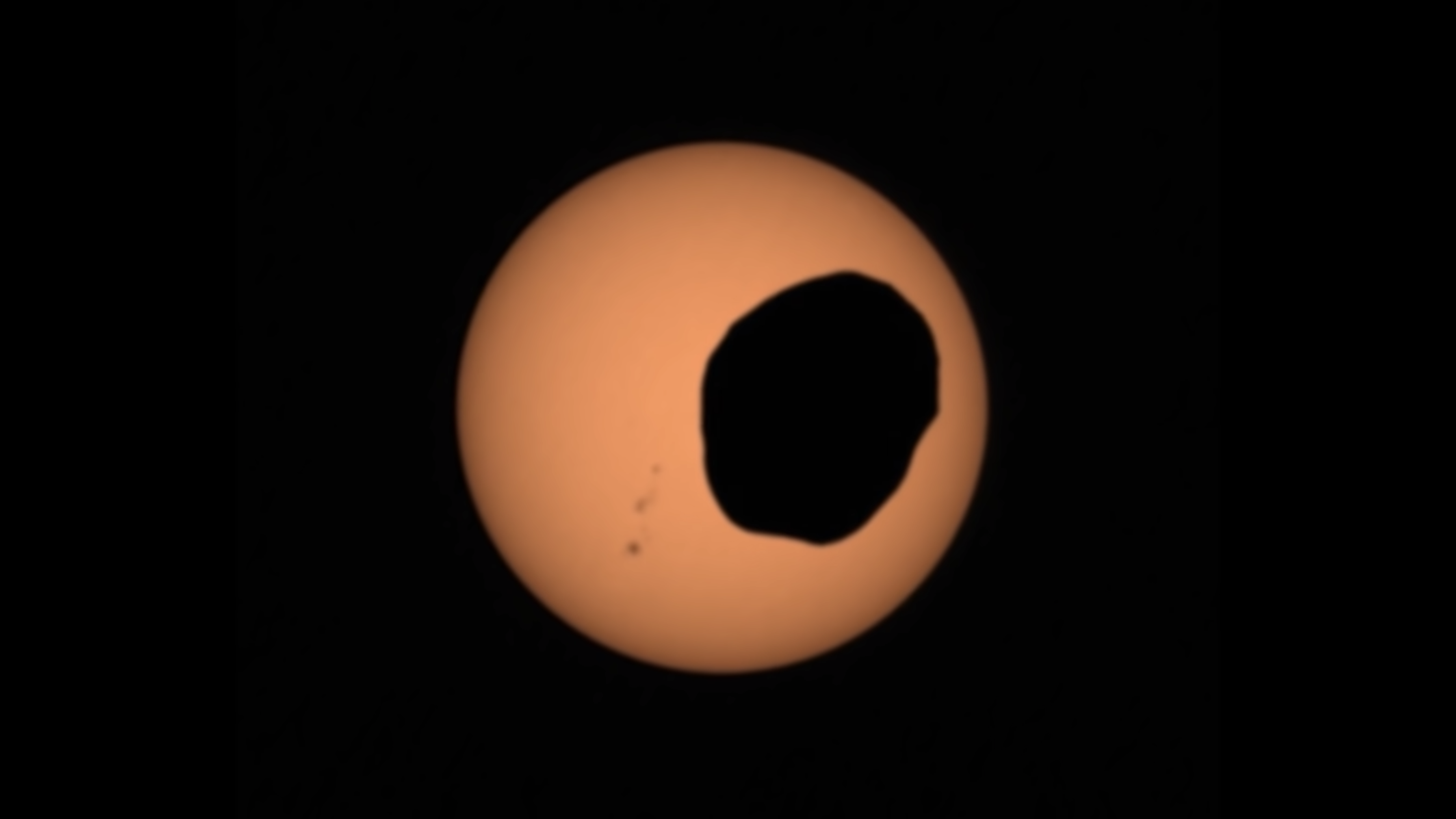Watch this! NASA rover captures video of a Martian solar eclipse
Phobos, one of Mars’ two moons, has been recorded eclipsing the sun by a NASA camera rover on the Red Planet

One of NASA’s rovers has recorded an impressive sight using its Mastcam-Z camera system. The Perseverance Mars rover captured a video of Phobos, one of Mars’ two moons, eclipsing the Sun.
This footage is the most zoomed-in, highest frame-rate observation of a Phobos solar eclipse ever taken from the Martian surface!
• Looking for the Best CCD cameras for astrophotography?
Phobos crossing in front of the sun is a relatively common occurrence, and has been observed by several of the Mars rovers spanning the last 18 years, but none have ever captured footage of an eclipse as spectacular as this.
Two Mars Exploration rovers, Spirit and Opportunity, were launched by NASA in 2003 to search for answers about the history of water on the Red Planet. Coincidentally, these rovers made the first observations of a Phobos eclipse back in 2004. Another rover, Curiosity, was the first to record actual video footage of the event in 2019.
Each time these moments of Phobos crossing the sun are observed, they enable scientists to obtain data and measure the subtle shifts in Phobos’ orbit over time.
The moon completes an orbit of Mars in just under eight hours, and studying this shift in orbit enables researchers to determine how resistant the crust and mantle of the planet are, with the moon’s tidal forces pulling on the deep interior, and thus informing what kind of material the crusts of Mars are made of.
Get the Digital Camera World Newsletter
The best camera deals, reviews, product advice, and unmissable photography news, direct to your inbox!
The odd potato-looking shape of the martian Phobos moon is mesmerizing to watch, and its transit across the sun is perfectly portrayed through the optics of the Perseverance's Mastcam-Z camera. It really puts into perspective our position in the universe and just how unique our rounded eclipses are in comparison.
If this isn't cool enough, NASA's Mars Perseverance rover is also equipped with two microphones that directly record sounds while it's at work exploring the Red Planet. Earth and Mars have different atmospheres, which can affect the varying ways in which sound is heard on these planets.
The video above is another recording captured courtesy of the Perseverance Mars rover, this time of sound, where the Ingenuity helicopter and the rover itself can be heard.
The Mars 2020 Perseverance mission is part of NASA’s Moon to Mars exploration approach, searching for signs of ancient microbial life on the Red Planet. This includes Artemis missions to the Moon that will help prepare for human exploration of Mars, advancing NASA's quest to explore the past habitability of Mars.
NASA's Mars 2020 Perseverance rover landed on 18 February 2021, and will remain there for the mission duration of at least one Mars year (approximately 687 Earth days / 1.8 years).
Read more:
Best camera for astrophotography
Best lenses for astrophotography
Best telescopes for astrophotography
Best light pollution filters for night photography
Best astrophotography software

Beth kicked off her journalistic career as a staff writer here at Digital Camera World, but has since moved over to our sister site Creative Bloq, where she covers all things tech, gaming, photography, and 3D printing. With a degree in Music Journalism and a Master's degree in Photography, Beth knows a thing or two about cameras – and you'll most likely find her photographing local gigs under the alias Bethshootsbands. She also dabbles in cosplay photography, bringing comic book fantasies to life, and uses a Canon 5DS and Sony A7III as her go-to setup.
